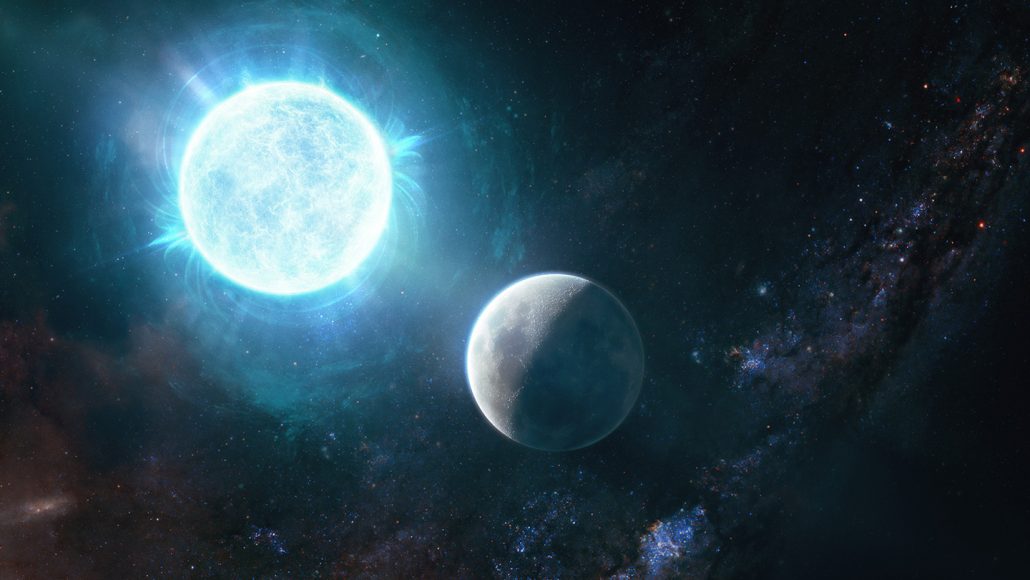Questions for “Moon-sized white dwarf is the smallest ever found”

With a radius of about 2,100 kilometers (1,305 miles), the newfound white dwarf (left, in this illustration) is just slightly bigger than our moon (right).
Giuseppe Parisi
Come explore with us!

With a radius of about 2,100 kilometers (1,305 miles), the newfound white dwarf (left, in this illustration) is just slightly bigger than our moon (right).
Giuseppe Parisi
To accompany “Moon-sized white dwarf is the smallest ever found”
1. What is the life-cycle of a typical star? (For instance, how does it come into being, how long does it “live” and what happens at the end of its life?)
1. Some stars become white dwarfs. What characterizes these stars?
2. What makes the newfound white dwarf particularly noteworthy?
3. How big is it? How massive is it?
4. How quickly does the newfound white dwarf rotate?
5. How far is it from our sun?
6. How do scientists think the new white dwarf might have formed?
7. Why does the story suggest this white dwarf is “living on the edge?”
1. White dwarfs are common and some are fairly close to us. Yet you can’t see any of them with the unaided eye. Why do you think that is? Give your reasoning, using what you learned in this story or elsewhere (such as Explainer: Stars and their families).
Register to access:
An error occurred. Please try again.
Already Registered? Enter your e-mail address above.